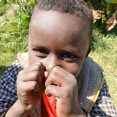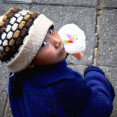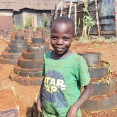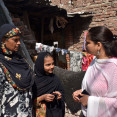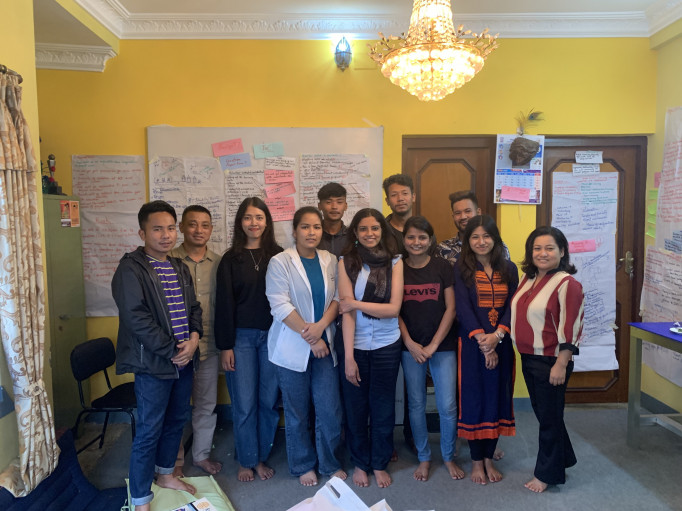
Smita Khanijow (above- front row, fourth from right) is Toybox's Progrmamme Manager for Africa and Asia. She recently returned from a project visit to Kathmandu in Nepal and shares her reflections from the trip.
I have been working in the development sector for many years and travelling to the projects has been an intrinsic part of my job. The main purpose of these visits is to check the progress of our programmes on the ground and learn and meet the communities. The pandemic impacted and changed my work life, restricting the ability to travel to the project areas. I have always really enjoy travelling, meeting new people, and seeing new cultures so when the lines for work-related travel opened again, I was excited to be back to our so-called ‘normal’. Earlier this year (June 2022) I travelled to Nepal. It was my first project visit since joining Toybox, who have been working in Nepal for the last 5 years with local partners Sath Sath and CWIN.
It's hard to imagine that the country with the world’s highest mountain peak - a mecca for all mountaineers globally- has street-connected children living in abject poverty in its valley, deprived of basic amenities and education rights. On my flight there, I read and re-read the project file to get the facts and figures straight- some reports state that Nepal has more than 5000 street-connected children. The official data from the Nepal government records (Census 2011) highlights that around 25 per cent of Nepali live under the absolute poverty line. A 2016 UNICEF report highlights that every year, at the lower secondary school age, about 32.7 per cent of out-of-school children drop out completely while 44.3 per cent are never expected to enter school. With the COVID pandemic, this percentage must have risen, impacting the educational opportunities for all children- and even more so for the street-connected children.
On the way to my hotel in Kathmandu, I realised that the scars of the 2015 earthquake were still visible, there were several unoccupied buildings and sites still under-construction. Back then, the 7.8 magnitude quake destroyed the lives and livelihoods of people across the country. A report read that more than 950,000 children in Nepal were affected by it and their education was disrupted. It felt like the vulnerability of the valley was concealed in the din of its people and uncontrolled urbanisation stretched the limits of the traffic control system in the city.
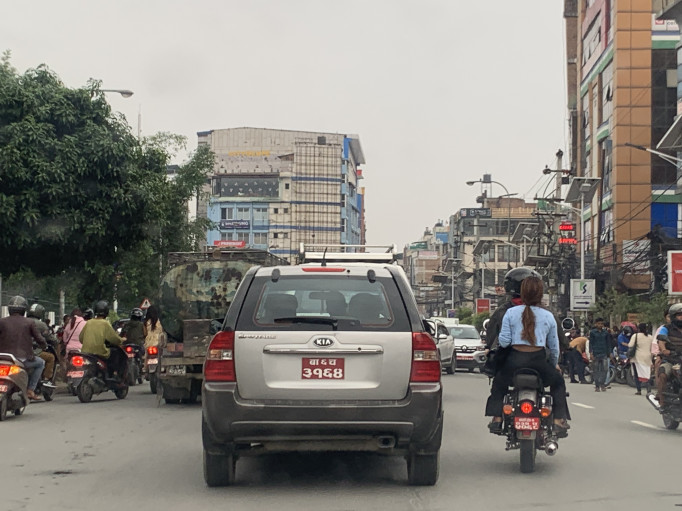
I spent the next few days with our local partners and their team members visiting project locations, meeting beneficiaries, learning and discussing the strategic priorities we need to focus on ahead. Sath Sath has been working in Nepal for more than two decades, its team has roots in several pockets of Kathmandu city including the area where the Pashupatinath temple is located. The temple is one of the World Heritage Sites and is a very touristy spot. Interestingly, one of the project’s non-formal education centres is located closer to the temple. After our discussion in this learning centre, the group of street-connected youth we met decided to show me the temple.
Ordinarily, you would enter the temple from the front side, however, the group took the back alley. Perhaps it never occurred to them to enter the building from the front door. What followed in our transit walk transformed something in me forever. The group I walked with consisted of two young women and two boys from the street community. All four of them had a shared history of living and growing up in this temple complex. In their conversations with each other, they seemed to be honest about their past and accepted the realities of their present life. On the way, I became very confused when they first took me to the spot where cremations were undetaken in the temple complex. In my head I was thinking, I am here at the World Heritage Temple site- why are they not taking me to see the ornate carvings and idols? It did not occur to me that the youth were keen to show me their way of life instead. As we reached closer to the cremation spot, they shared how, as young children, they would dive into the water in the pond and collect the coins which were showered on the dead. Now I knew just how important this spot of the complex was for the street-connected children.
Later, I encouraged them to share more about their life on that site. We went through unoccupied areas of the temple complex- some of them were their childhood hide-outs. They animatedly shared about their daily encounters with drug dealers and thugs and showed me where they would hide their daily stash of food, scraps, and coins.
On our way to the main entrance, we met many other younger street-connected children. Our parter checked with them about their wellbeing, sorted their squabbles and encouraged them to come along to the learning centre. By the time I reached the front gate of Pashupatinath temple I did not feel the urge to see anything inside. I knew I had seen the unseen side of this World Heritage Site.

Smita Khanijow, Toybox Programme Manager for Africa and Asia
